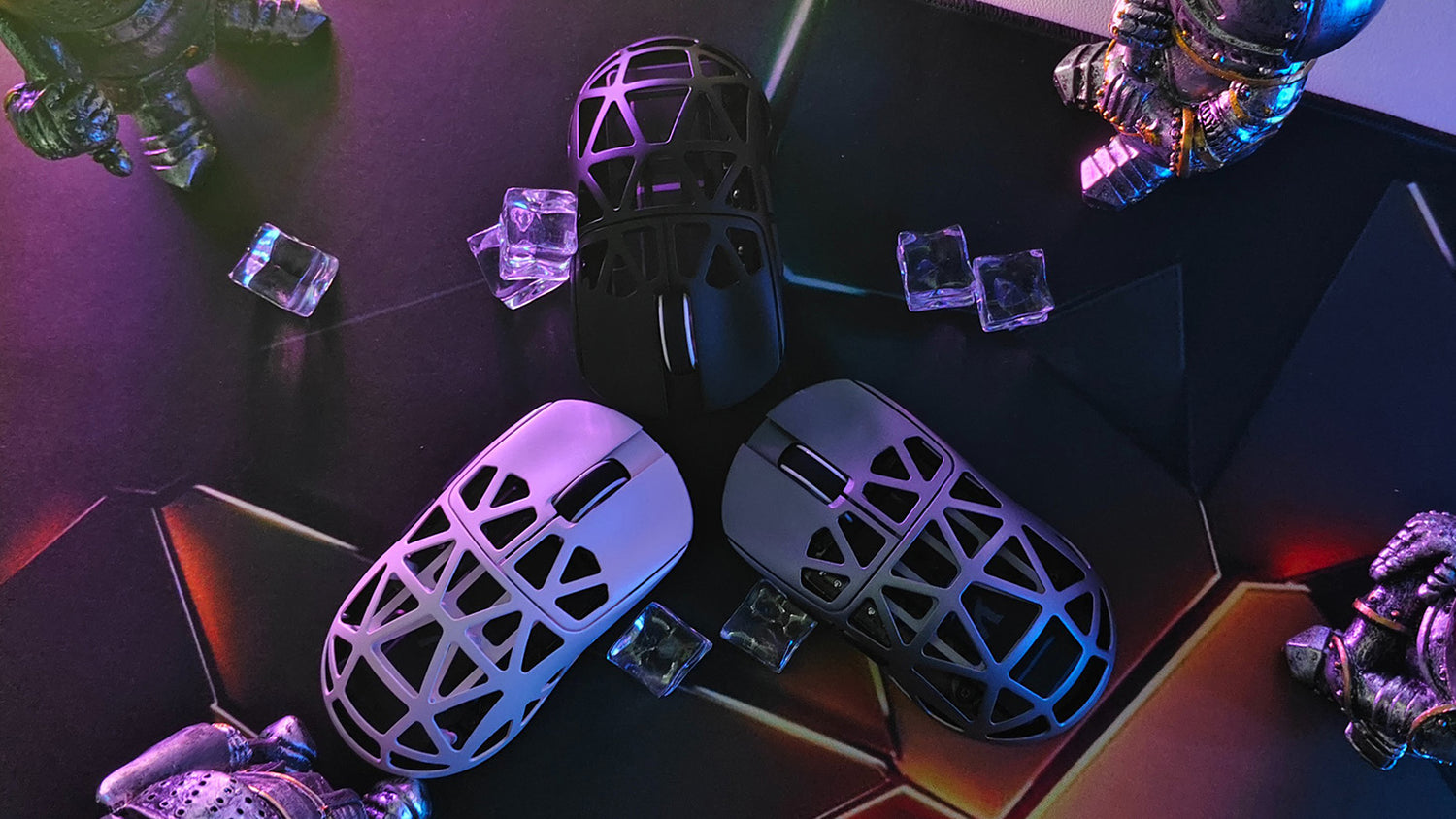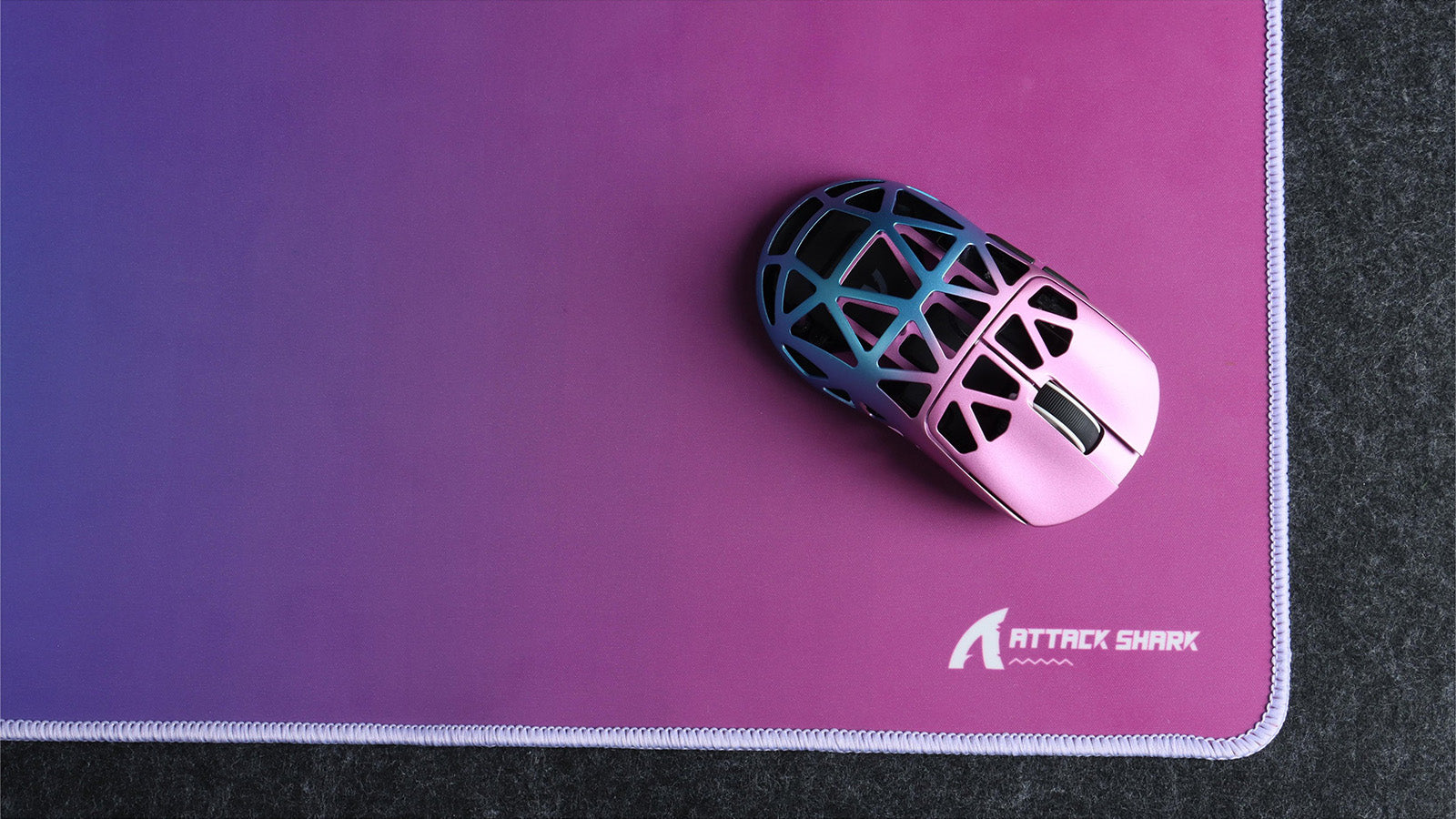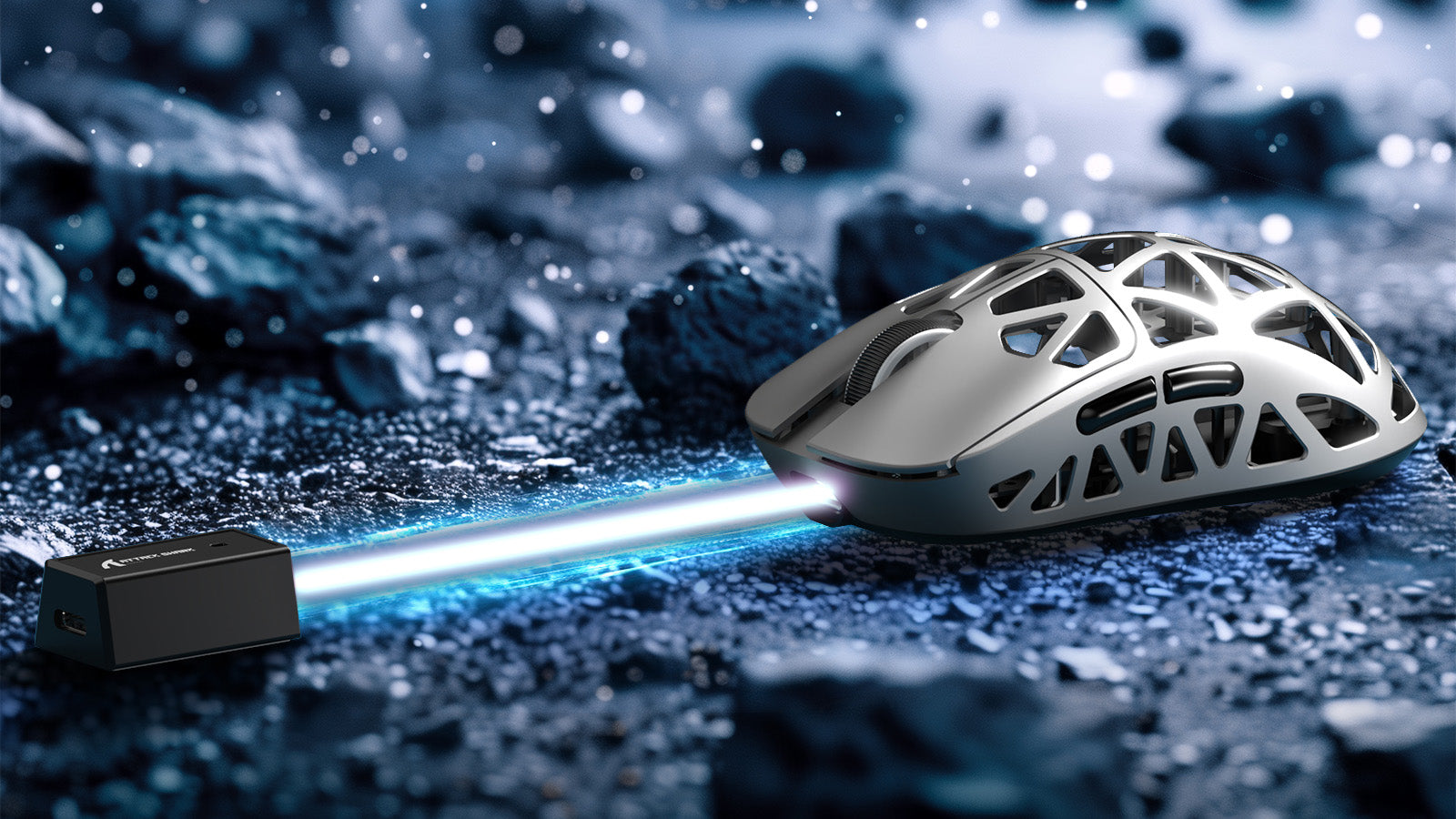In games, the little things can make a big difference-like how quickly your mouse talks to your computer. That's what "Polling Rate" is all about. Think of it as how often your mouse updates your computer on where it is. This might sound technical, but it's actually a key ingredient in making sure your movements are smooth and snappy in games. In this article, we're going to explain why Polling Rate is something you should care about, show you how to tweak it for different kinds of games and settle the debate on whether a higher rate always means better play.
What Is the Polling Rate on a Mouse?
If you've ever wondered how your gaming mouse communicates with your computer, the concept you're curious about is known as the "Polling Rate." Simply put, this refers to how often your mouse sends its location to the computer.
The Polling Rate is measured in hertz (Hz), which tells us the number of times per second the mouse reports its position. Common Polling Rates are 125Hz, 500Hz, and 1000Hz. For example, a 125Hz Polling Rate means the mouse updates its position 125 times per second.

Why Does Polling Rate Matter for Your Gaming Performance?
But why is this technical-sounding feature so critical for gamers?
Real-Time Response
A higher Polling Rate translates to your movements being registered more frequently. This means when you move or click your mouse, that action appears on-screen almost instantly. In fast-paced games, a delay (even just a few milliseconds) can impact your performance.
Smoothness and Accuracy
Imagine trying to aim quickly at a target; a higher Polling Rate helps ensure the cursor's movement on your screen is smooth and accurate, reducing the choppiness that can occur with lower rates. This smoothness allows for precision, which is crucial in competitive gaming.
The Right Rate for You
While a high Polling Rate is generally better for gaming, it's not always necessary to have the highest available setting. The right Polling Rate can depend on the types of games you play, your computer's capabilities, and personal preference. It's all about finding the balance that works best for your setup and gaming style.

How Do You Choose the Right Polling Rate for Your Games?
Finding the ideal Polling Rate is a personalized journey that hinges on understanding what you need for an optimal gaming experience. It's about aligning the Polling Rate with the type of games you play, the capabilities of your PC, and what feels intuitively right for you.
1. Match the Game Type
Different game genres demand different levels of responsiveness:
- Fast-Paced Shooters: Titles like "Call of Duty" or "Overwatch" benefit from a higher Polling Rate (e.g., 1000Hz) to ensure every rapid movement and shot is captured without delay.
- MOBAs and Strategy Games: For games like "League of Legends" or "StarCraft II," where strategic clicks are more crucial than split-second reactions, a lower rate like 500Hz can be sufficient and still provide smooth cursor movement.
- Action-Adventure Games: In games such as "The Witcher 3" or "Assassin's Creed," a moderate Polling Rate around 500Hz to 1000Hz combines performance with comfort, enhancing both exploration and combat sequences.
- Turn-Based RPGs: Games like "Divinity: Original Sin 2" or "XCOM 2," where the pace is measured, can perform well even at Polling Rates of 125Hz to 500Hz, as instantaneous responses aren't as critical.
2. Consider Your Computer's Specs
A high-end rig with the latest CPU and GPU will handle a 1000Hz Polling Rate effortlessly, ensuring games like "Cyberpunk 2077" or "Fortnite" respond quickly to your reflexes. But if you're running on a mid-range setup, balancing performance and Polling Rate to avoid unnecessary processing load is key.
3. Personal Comfort Level
Comfort is subjective, and it plays a significant role in choosing your Polling Rate:
- If you're a player who prefers a mouse with a bit of 'weight' in its movement, perhaps for sniping in "Destiny 2," you might find a slightly lower Polling Rate more to your liking.
- Conversely, if you're about rushing and fast turns in "Apex Legends," a high Polling Rate will probably feel better as it keeps up with your quick hand movements.
In conclusion, there's no universally 'correct' Polling Rate; it's all about personal preference and the demands of the games you love. The best approach is to test different settings across various titles-like "DOTA 2," "Battlefield," and "Final Fantasy XIV"-to discover the sweet spot that offers the most immersive and responsive gameplay experience.

How Can You Change the Polling Rate on a Mouse?
With a few simple steps, you can modify this setting to tailor your gaming mouse's responsiveness to your liking.A mouse's polling rate is just one factor that can affect your gameplay experience. To learn more about the impact of your gaming gear, check out this article on "Does a Gaming Mouse Affect Your Gameplay".
Accessing Mouse Settings
Most modern gaming mice come with their own software that allows you to adjust the Polling Rate. This software typically installs automatically when you plug in your mouse or can be downloaded from the manufacturer's website. Once you open the software, look for the settings or configuration section.
Step-by-Step Adjustment
In the mouse configuration software, you'll often find a slider or a drop-down menu labeled "Polling Rate" or something similar. It will allow you to select different frequencies, usually ranging from 125Hz to 1000Hz. Some high-end mice even offer 2000Hz or more.
Testing for Best Performance
After adjusting the Polling Rate, it's important to test how it feels in action. Try it out in different games and applications. Notice if there's any lag or choppiness in cursor movement or if your system performance takes a hit. If so, you may need to dial the Polling Rate back until you find a setting that offers both smooth motion and stable performance.
Ensuring Compatibility
It's also crucial to ensure that your chosen Polling Rate is compatible with your operating system and hardware. While most modern systems can support a 1000Hz Polling Rate without any issues, older setups may require you to opt for a lower frequency.
The Impact of Polling Rate
In gaming, a mouse's Polling Rate is pivotal-impacting responsiveness and precision. Though high rates improve reaction times in fast-paced games like "Call of Duty," the ultimate goal is to calibrate this setting to suit your personal playstyle, game genre preferences, and system specs. By tweaking the Polling Rate through your mouse's software, you can enhance control and gain a competitive edge, ensuring your movements on-screen are as swift and smooth as your reflexes.Understanding polling rate is just one step in choosing the right mouse; for a comprehensive guide on finding the perfect fit, check out our article on "How to Choose a Mouse That Suits You".
FAQ
Q1: Is the Polling Rate the same as DPI/CPI?
No, Polling Rate refers to how often the mouse reports its position to the computer, while DPI (Dots Per Inch) or CPI (Counts Per Inch) measures the mouse's sensitivity to movement. They are related but have distinct specifications.
Q2: Will changing the Polling Rate affect my mouse's battery life?
For wireless mice, a higher Polling Rate can lead to quicker battery depletion since the mouse communicates more frequently with the receiver.
Q3: Are there times when I might want to lower my mouse's Polling Rate?
If you're experiencing issues with cursor jitter or your system is under heavy CPU load, lowering the Polling Rate can sometimes alleviate these issues.Cursor jitter can also be influenced by your mouse's debounce time, another important setting to consider for optimal performance. To understand more about debounce time and its effects, check out our article on "What is Debounce Time on a Mouse".






Leave a comment
This site is protected by hCaptcha and the hCaptcha Privacy Policy and Terms of Service apply.